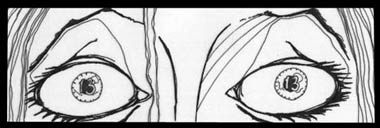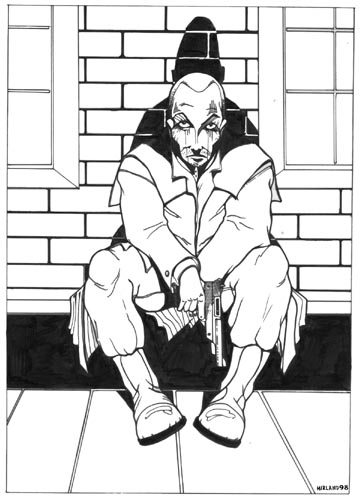 |
Nearside games
 |

| World | Theme/Name | Description |
| Earth 1 | Homeworld | This is our world mundane and normal. Others dream of such a boring life. You, on the other hand wish you had it so easy. |
| Earth2 | The K'thari Invasion | The K'thari invaded this earth in 1989, and have been fighting ever since. We are winning , but the insect aliens are entrenched across Europe and Asia. |
| Earth3 | The Fall | The world was struck by an asteroid in 1989, and is about to die. Civilisation is about to fall for the final time, and half the world is already dead. |
| Earth4 | Past Tense | This world is one year in the past of Earth1. It's normal apart from that. Imagine the possibilities of going back, and knowing exactly what will happen, and when.... |
| Earth5 | Inner Circle | This world is like ours, except Magic is everyday and common. It's used like technology, but is in the hands of governments and corporations. |
| Earth6 | Knowing | Imagine the 'Butterfly Effect', where one tiny thing can influence the world- and you can see it all. |
| Earth7 | Otherwhere | On this Earth, everything is almost the same... except reality is held together by ritual and belief, and dreams become truth- as well as nightmares. |
| Earth8 | The Vanishing | The population of this world has disappeared. Where has everyone gone ? And why ? |
| Earth9 | The Fading | This world has forgotten those things that are intangible- reasons for doing one thing and not to do another- it's a state of Nature, but its just on this side of Hell. |
| Earth10 | Pandemonium | A scientist has found a method of teleportation- by 1997, thousands have used the system, but when they come out the other side, something has changed |
| Earth11 | Hostile Takeover | After a world-wide epidemic, the Zenith Corporation now have a veto in almost all of the worlds governments. But that's only fair- they did save the world. |
| Earth12 | December Storm | The insane vision of one man has resulted in the creation of Avatars, tremendously powerful humans |
| Earth13 | Future Tense | This world is one year in the future of Earth1. What do you do when you discover the date and time of your own death? Can you- should you try and avoid it? |
The SystemBack to topThe Nearside project was originally based on a percentile system, this has now changed to a D10 based system to simulate combat and skill use. The skills are bought in the character generation phase and are added to the relevant stat whilst checking for success or failure. Skills range from unskilled, polished, practiced, professional, expert and polished each of these in turn giving bonuses of -2, 0, +1, +2, +3, +4, respectively. The skill pool is the final figure against which a D10 roll is made and is determined by adding the skill rating to the stat. Once the skill pool has been determined and the difficulty of the task decided(tasks are assigned a difficulty of either easy, routine, difficult or almost impossible, these carrying modifiers of +2, 0 -2, -4) the roll is made using a 1D10. If the roll is less then the modified skill pool, it is a success otherwise it has failed. A roll of 1 is considered an automatic success and a roll of 10 an automatic failure. The GM is encouraged to optionally decide if she wants to assign degrees of success or failure. The following example is given:
There is an extensive skill list along with descriptions as to what these involve. These are listed in alphabetic order and are grouped together under general categories. The categories are: Artistic skills Athletic skills Bureaucratic skills Armed combat skills Ranged combat skills Unarmed combat skills Technical skills Medical skills Military skills Outdoors skills Perception skills Scientific skills Social skills Vehicle skills |
 http://fluch.mirland.dk |
| The stat is called Distance, because of the colloquial language that has built up around the condition. One Nearsider might ask another 'how far have you been?' and know that the question means both 'how many variations have you travelled to', and 'just how mad are you?'. p. 40 |

